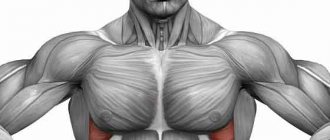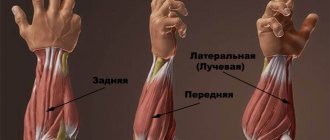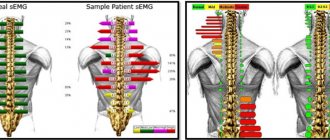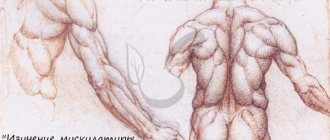How quickly do you lose strength without training?
So there are 3 studies that say that strength loss occurs after about 3 weeks without any training.
Source: 1. Eur J Appl Physiol. 2000 Sep. Neuromuscular adaptation during prolonged strength training, detraining and re-strength-training in middle-aged and elderly people. 2. Clinical Physiology and Functional Imaging 31(5):399-404 · September 2011 Effects of periodic and continued resistance training on muscle CSA and strength in previously untrained men. 3. Arbeitsphysiologie 113(4) · October 2012 Comparison of muscle hypertrophy following 6-month of continuous and periodic strength training.
Another study suggests that one-rep max, that is, one repetition with the maximum weight, decreases after week 4 without training.
Source: 1. Higher Training Frequency Is Important for Gaining Muscular Strength Under Volume-Matched Training.
It is interesting that beginners experience a drop in strength indicators 3 weeks after no training, but in the long term, when the training process is resumed, this break does not matter at all.
The graph shows the one-rep maximum for 2 groups over 24 weeks of training. The first group, black line on the graph, trained for 6 weeks, then took 3 weeks off and repeated the cycle. The second group, the white line on the graph, trained for 24 weeks without a break. Ultimately, the difference in strength between the two groups was not significant. Source: Arbeitsphysiologie 113(4) · October 2012 Comparison of muscle hypertrophy following 6-month of continuous and periodic strength training.
As for professional athletes, there is a 2017 study (Source: The Journal of Strength & Conditioning Research: April 2020. Resistance Training–Induced Elevations in Muscular Strength in Trained Men Are Maintained After 2 Weeks of Detraining and Not Differentially Affected by Whey Protein Supplementation ), which showed that maximum strength indicators in young male athletes are maintained for 2 weeks without training.
Time required to form muscle memory
Muscle memory is an effect that does not appear from the first training. You can count on its acquisition if you have been leading a sporty lifestyle for years. After the first month of training, you should not rush to take a break from training and wait for increased dynamics of muscle mass growth when you return to the gym. Simply put, the longer you have been involved in sports and the shorter the planned break from physical activity, the more expressively you will experience the phenomenon of muscle memory. An important factor in building your ideal body is your diet. A sports lifestyle should be accompanied by a healthy, moderate diet. Otherwise, no physical activity will bring the desired effect in losing weight and creating tone in the main muscle groups. And this factor is doubly important when you return to training after a long break. Perhaps for the quickest effect, it would make sense to supplement sports activities with dietary patterns, swimming, visiting a steam room, more frequent walking or jogging.
How quickly do you lose muscle without training?
If it’s clear with strength indicators, on average they drop after 2-4 weeks without training, depending on your level of fitness , age, gender and other parameters. What happens to muscles without training?
It’s a little more complicated with them, since muscles have certain components, such as glycogen. Glycogen is one of the forms of energy reserves in the body; in fact, glycogen is carbohydrates, a form of storing glucose, the main fuel for our muscles.
A 1985 study examined the muscle glycogen content of swimmers after 5 months of intense training and 4 weeks of rest using muscle biopsies. The glycogen content during the 4th week of rest decreased by almost 2 times. Source: Med Sci Sports Exerc. 1985 Metabolic characteristics of skeletal muscle during detraining from competitive swimming.
I think that many people now already know the statement that 1 gram of glycogen binds 3 grams of water ; this was suggested by German scientists back in 1906 (Zuntz N, Loewy A, Muller F, et al. Hohenklima und Berg-wanderungen. Berlin; 1906.).
There were further studies, for example in 1970, scientists using water marked with the radioactive isotope of hydrogen - tritium, came to the conclusion that 3-4 g of water is bound while maintaining one gram of glycogen in the liver and muscles (Olsson KE, Saltin B. Variation in total body water with muscle glycogen changes in man. Acta Physiol Scand. 1970).
Therefore, we lose “muscle volume” primarily due to a decrease in glycogen reserves, carbohydrates in muscles and water. Of course, we can trick our body a little and eat more carbohydrates in order to maintain “muscle volume” for as long as possible without training, but this is not a very good option for our figure in general.)
By the way, there was also a study on how training affects the accumulation of water in the intercellular space:
Here is a graph of how the amount of water in liters in the body changed for men (black line) and women (gray line) during 16 weeks of training. Source: European Journal of Sport Science 14(6):578-585 January 2014 Resistance training promotes increase in intracellular hydration in men and women
In general, replenishing carbohydrates and water is not so difficult and, as it were, regaining “muscle mass.” But I think everyone is interested in the question “how quickly are muscles and pure muscle protein lost?” And this is a very good question, since many studies measure the rate of loss of strength, muscle volume (including glycogen and water), but not the muscle cells themselves.
Here is an example of different models for assessing body composition, option 2-C can determine fat and lean mass, 3-C divides body composition into 3 components: fat, lean mass and bones separately, 4-C can detail the composition of lean mass down to protein structures and water . Different studies use different technologies and methods, so estimates of changes in the amount of “muscle mass” may differ.
How long does muscle memory last?
Naturally, the longer the interval between stopping and resuming training, the worse muscle memory works. If you give the body a few months to rest after an injury, you can really return to its former shape in a very short time.
A break from physical activity that lasts years will require much longer recovery time, however, even in this case, muscle memory and a trained nervous system will allow you to catch up much faster than if you started training for the first time.
What was the longest break you had from training and how quickly were you able to get back into shape?
Muscle memory.
There is such a cool mechanism inside our muscle cells that allows us to quickly restore muscle volume after a long rest or injury.
When we exercise, new nuclei are formed in muscle fibers, muscle cells. As muscle cells grow, the number of nuclei also increases. But after stopping training and reducing muscle cells in volume, the number of nuclei remains virtually unchanged. Scientists from Norway conducted a similar experiment on mice. After stopping the load on the muscles, within 14 days the muscles atrophied, the thickness of the fibers decreased by 40%, and the number of nuclei remained at the same level (Source: Department of Molecular Biosciences, University of Oslo Myonuclei acquired by overload exercise precede hypertrophy and are not lost on detraining).
This kind of “muscle memory” can be very long lasting in humans, with myonuclei remaining stable for 15 years or even being constant for a lifetime. However, in old age, the number of nuclei in a muscle cell is difficult to grow, so experts recommend starting physical exercise and muscle training from an early age. Source: J Exp Biol. 2020 Muscle memory and a new cellular model for muscle atrophy and hypertrophy.
The second component of “muscle memory” is neuromuscular communication . The more we exercise, the more new synapses, connections between neurons, and blood vessels are formed in the motor cortex (motor cortex) and spinal cord. And after a break in training, you can observe accelerated growth and restoration of nutrition in the motor areas of the brain in those people who exercised more before the break. Source: J Appl Physiol (1985). 2006 Dec Motor training induces experience-specific patterns of plasticity across motor cortex and spinal cord.
So “muscle memory” is not a myth , it exists and it is this that helps muscles quickly recover after a long break.
How to use muscle memory
The phenomenon of muscle memory is another example of how amazingly human beings are. But this does not mean that there is no room for several life hacks that we ourselves can do with our bodies.
Don't be afraid to stop training
Your muscle memory is the key to returning to the gym, track, or track after a long break without much effort. This is your capital and a guarantee that all your training, efforts and achievements were not in vain. Thanks to muscle memory, you can calmly stop your training for a while and not worry about missed opportunities.
Take breaks to achieve results
To some extent, the phenomenon of muscle adaptation to stress is associated with the phenomenon of muscle memory. At a certain point, you reach a plateau when your muscles are already accustomed to the weights and exercises, so there is no progress. In this situation, you can temporarily stop training.
Thanks to muscle memory, you don’t have to worry about not being able to get back to the results you achieved. And after a deliberate break, you can gradually begin to train with renewed vigor in order to take on new weights, see progress, and move from a dead point.
What about maintaining muscle mass?
There is a study that says that if a person worked out on average 3 times a week, then 1 intense workout per week will be enough (Med Sci Sports Exerc. 2011 Exercise dosing to retain resistance training adaptations in young and older adults .) That is, if you maintain the intensity of training, but reduce the training volume and frequency of training by 60%, then even this will be enough, on average, to maintain muscles.
So, for most people, home workouts can be not just a way to effectively maintain muscle mass, but also a complete replacement for the gym.
If you are a beginner or have an average level of training, then home workouts will be able to sufficiently load your muscles; they will fully allow you to realize the progression of loads and, accordingly, muscle growth. Well, for advanced users, such home workouts will help maintain the shape developed in the gym for quite a long time.
Don't lose muscle, keep exercising! #not blown away
Muscle memory in old age
Every workout, every increase in load gives a signal to the body that it needs to be on alert. You need to build up strength and endurance.
This is great motivation. After a hard workout, remember that you're not only stronger today, you're stronger forever. You have made a capital investment in your health, which will be with you for many years.
Having achieved results today, you will be able to return to the gym at forty, fifty and sixty years old, and your body will give a good response.
{module 277}
Everyone's favorite American politician Arnold Schwarzenegger starred in an action movie in 2013. In an interview, he said that he had to change his regimen for a couple of months in order to gain muscle mass for such a film. Just a couple of months and you're done! But he, I’m not afraid to say, is almost a grandfather; he’s already over 65.
Someone might say:
- This is the great Schwarzenegger, what do I have to do with it?
Great he is great. But in this example, the main role is played by perfectly developed muscle memory.
Detrained
Detraining is exactly what will happen to us. Our body ALWAYS tries to minimize energy expenditure, because... loves to save money. And as we said before, muscles require a lot of energy!
Imagine a factory that has stopped producing some products. Is it profitable for him to keep and pay wages to those workers who worked on its production? Of course not! These employees are simply fired.
The same thing happens with unused functions of the body, as well as with our muscles... He “dismisses” those of them that he does not need now. What's the point of keeping them?
First, we lose our endurance, then some of our muscle mass disappears, and then our strength begins to decline. Moreover, this process is by no means fast and occurs in stages.
In the first 2 months we lose the most 15-30% of our results. After this, the process slows down. Many athletes retain 30-50% of their trained functions even after a year.
And also, the longer the athlete trained before, the less will be his loss in strength and muscle mass, and the loss will occur much more slowly. The recovery to the previous level will also occur much faster.
If the process of returning to training is carried out correctly, then after 2-3 months you can get back everything you lost! It's all thanks to muscle memory.
First, your strength, coordination and endurance will return. Then muscle mass will return more slowly. The slowest thing will be the return of the strength of the nerve impulse, with the help of which we can contract our muscles much better.











